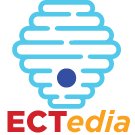Experiential Gaming Model: Difference between revisions
Tanvivartak (talk | contribs) |
Tanvivartak (talk | contribs) |
||
| Line 1: | Line 1: | ||
= Overview = | = Overview = | ||
The experiential gaming model is a learning approach that integrates [[ | The experiential gaming model is a learning approach that integrates [[Experiential Learning]], [[flow | flow theory]] and game design. The focus is understanding how the factors contributing to a flow state can be used in educational games to maximise its impact. The model emphasises the importance of providing players with immediate feedback and clear goals and challenges that match their skill level. | ||
== Stages of Computer-mediated flow states == | == Stages of Computer-mediated flow states == | ||
Revision as of 14:51, 24 February 2023
Overview
The experiential gaming model is a learning approach that integrates Experiential Learning, flow theory and game design. The focus is understanding how the factors contributing to a flow state can be used in educational games to maximise its impact. The model emphasises the importance of providing players with immediate feedback and clear goals and challenges that match their skill level.
Stages of Computer-mediated flow states
In computer-mediated flow studies the following stages related to flow are distinguished into three phases. However, which factors referring to flow belong in each stage is debated
- Flow antecedent - It related to focused attention [1] , a clear set of goals, immediate and appropriate feedback [2], potential control [3] , a perception of challenges that match the person’s skills [4], playfulness [5] speed and ease of use [6]
- Flow experience - The flow experience comprises a merging of action and awareness, concentration, a sense of control over activity [7] time distortion, and telepresence[8]
- Flow consequence - Leads to increased learning [9] , increased exploratorybehaviour[10], positive effect, an acceptance of information technology [11] and perceived behavioural control [12]
Evidence
Examples
Critique and Design Implications
Challenges
References
- ↑ Chen, H., Wigand, R., & Nilan, M. S. (1999). Optimal experience of web activities. Computers in Human Behavior, 15,585 – 608
- ↑ Chen, H., Wigand, R., & Nilan, M. S. (1999). Optimal experience of web activities. Computers in Human Behavior, 15, 585 – 608
- ↑ Finneran, C. M., & Zhang, P. (2003). A person-artefact-task (PAT) model of flow antecedents in computer-mediated environments. International Journal of Human-Computer Studies, 59, 475 – 496
- ↑ Chen, H., Wigand, R., & Nilan, M. S. (1999). Optimal experience of web activities. Computers in Human Behavior, 15, 585 – 608
- ↑ Webster, J., Trevino, L. K., & Ryan, L. (1993). The dimensionality and correlates of flow in human-computer interaction. Computers in Human Behavior, 9, 411 – 426.
- ↑ Skadberg, Y. X., & Kimmel, J. R. (2004). Visitors’ flow experience while browsing a web site: its measurement, contributing factors, and consequences. Computers in Human Behavior, 20, 403 – 422.
- ↑ Chen, H., Wigand, R., & Nilan, M. S. (1999). Optimal experience of web activities. Computers in Human Behavior, 15, 585 – 608
- ↑ Finneran, C. M., & Zhang, P. (2003). A person-artefact-task (PAT) model of flow antecedents in computer-mediated environments. International Journal of Human-Computer Studies, 59, 475 – 496
- ↑ Skadberg, Y. X., & Kimmel, J. R. (2004). Visitors’ flow experience while browsing a web site: its measurement, contributing factors, and consequences. Computers in Human Behavior, 20, 403 – 422.
- ↑ Webster, J., Trevino, L. K., & Ryan, L. (1993). The dimensionality and correlates of flow in human-computer interaction. Computers in Human Behavior, 9, 411 – 426.
- ↑ Ghani, J. A. (1991). Flow in human-computer interactions: test of a model. In J. Carey (Ed.), Human factors in management information systems: emerging theoretical bases. Ablex, New Jersey7 Publishing Corp
- ↑ Kiili, K. (2005). Digital game-based learning: Towards an experiential gaming model. The Internet and Higher Education, 8(1), 13-24. doi: 10.1016/j.iheduc.2004.11.001
